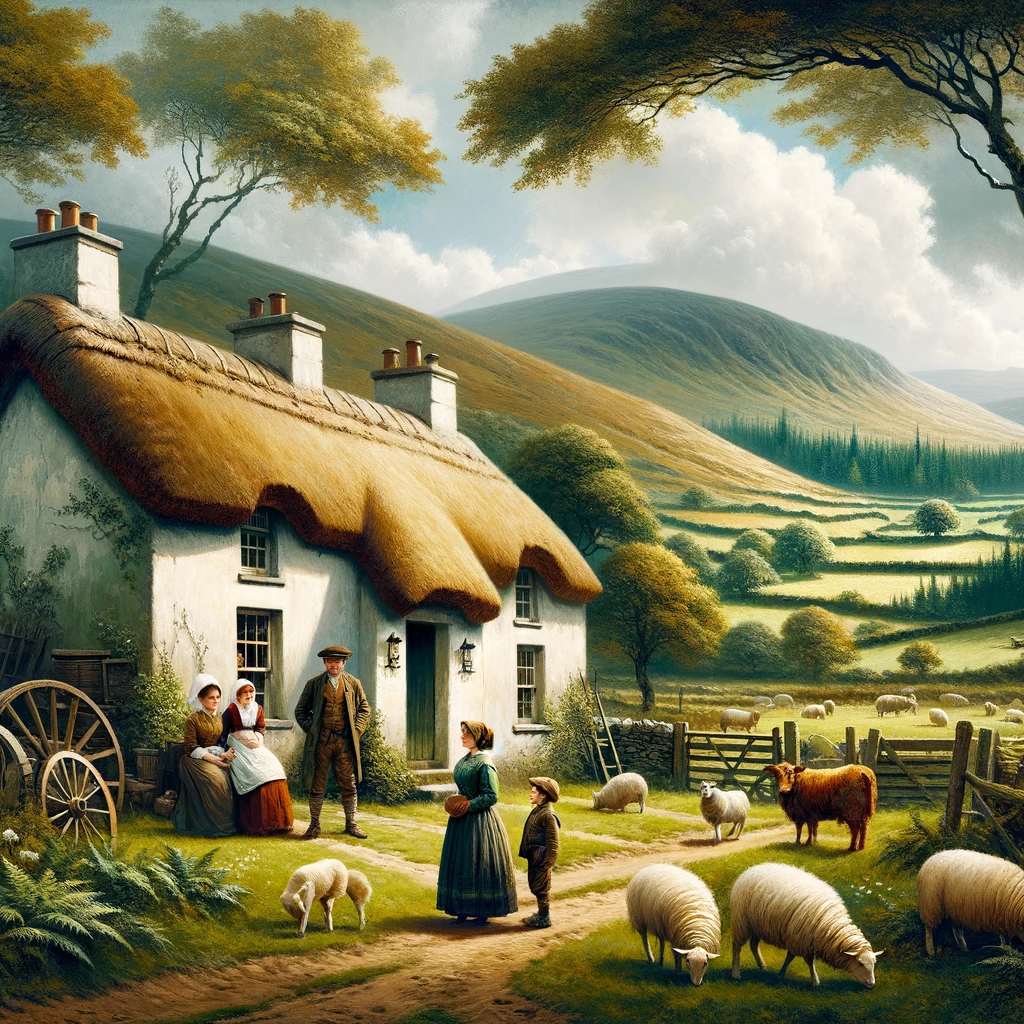
Introduction: Ireland’s Employment Landscape Through the Ages
Ireland’s employment history reflects a dynamic journey, shaped by various economic, social, and political forces over the centuries. From agrarian beginnings to the modern tech-driven economy, the evolution of work in Ireland tells a story of resilience, adaptation, and innovation. This essay delves into the key phases of Irish job history, examining how each era has influenced the current employment landscape.
The Agrarian Roots and the Great Famine Impact
Historically, Ireland was predominantly an agrarian society. Up until the 19th century, a significant portion of the population was engaged in agriculture and related rural trades. This was a period characterized by tenant farming, with the majority of the populace living in rural areas and relying on agriculture for their livelihood.
The Great Famine (1845-1849)
The Great Famine profoundly impacted Ireland’s employment landscape. It led to mass emigration and a significant decline in population, drastically altering the economic and social structure. The famine’s aftermath saw a gradual shift from traditional agrarian practices to more diversified means of livelihood, though agriculture remained a key sector.
Industrialization and the 20th Century
The late 19th and early 20th centuries marked the beginning of industrialization in Ireland, though it lagged behind other European countries. The establishment of the Irish Free State in 1922 and subsequent policies aimed at self-sufficiency further shaped the employment scenario. Industries such as textiles, brewing, and food processing began to emerge, creating new job opportunities.
The Influence of World Wars
World War I and II also had significant impacts. While Ireland remained officially neutral in WWII, these global conflicts influenced its economy and, consequently, its job market. Post-WWII, there was a push towards modernization and industrial development.
The Celtic Tiger and the Modern Economic Boom
The late 20th century witnessed a remarkable transformation in Ireland’s employment history, known as the Celtic Tiger era.
The Celtic Tiger (1995-2007)
This period was marked by rapid economic growth, driven by foreign direct investment, especially in technology and pharmaceutical sectors. The influx of multinational corporations transformed the Irish job market, creating numerous opportunities in diverse sectors including IT, finance, and services.
Impact on Employment and Society
The Celtic Tiger era led to significant changes in employment patterns. There was a shift from traditional industries to service and knowledge-based sectors. This period also saw improvements in working conditions, wages, and Ireland’s overall economic standing on the global stage.
Post-Celtic Tiger Challenges
The global financial crisis of 2008 had a substantial impact on Ireland, leading to an economic downturn and rising unemployment. However, the resilience shown by the Irish economy and its ability to recover has been noteworthy.
Contemporary Trends and Future Prospects
Today, Ireland’s employment landscape is characterized by its diversity and adaptability.
The Current Job Market
The contemporary job market in Ireland is diverse, with strong sectors like technology, pharmaceuticals, and finance. There’s also a growing emphasis on green energy, biotechnology, and research & development.
Challenges and Opportunities
Current challenges include adapting to technological advancements, addressing skills gaps, and managing the impacts of globalization and economic fluctuations. However, these challenges also present opportunities for innovation and growth.
Looking to the Future
As Ireland looks to the future, there’s a focus on sustaining economic growth, promoting sustainable practices, and embracing technological innovation. The adaptability and resilience shown throughout its history suggest a continued evolution and growth of the Irish job market.
Conclusion
Ireland’s employment history is a rich tapestry, marked by significant transformations from its agrarian roots to a modern, dynamic economy. The journey reflects the resilience and adaptability of the Irish workforce and economy. Understanding this history is key to appreciating the current employment landscape and anticipating future trends. The story of Irish employment is one of overcoming adversity, embracing change, and continually looking forward to new possibilities.